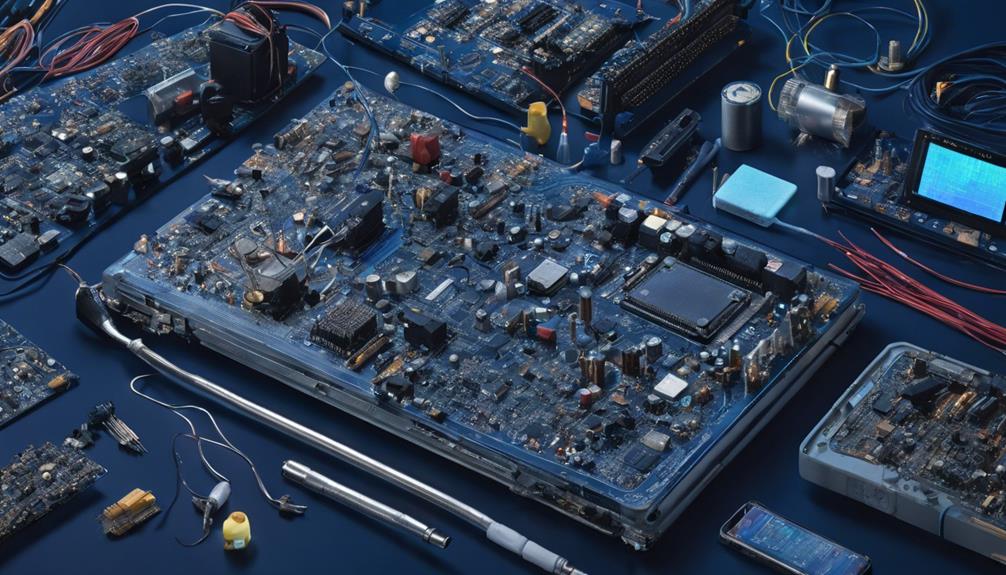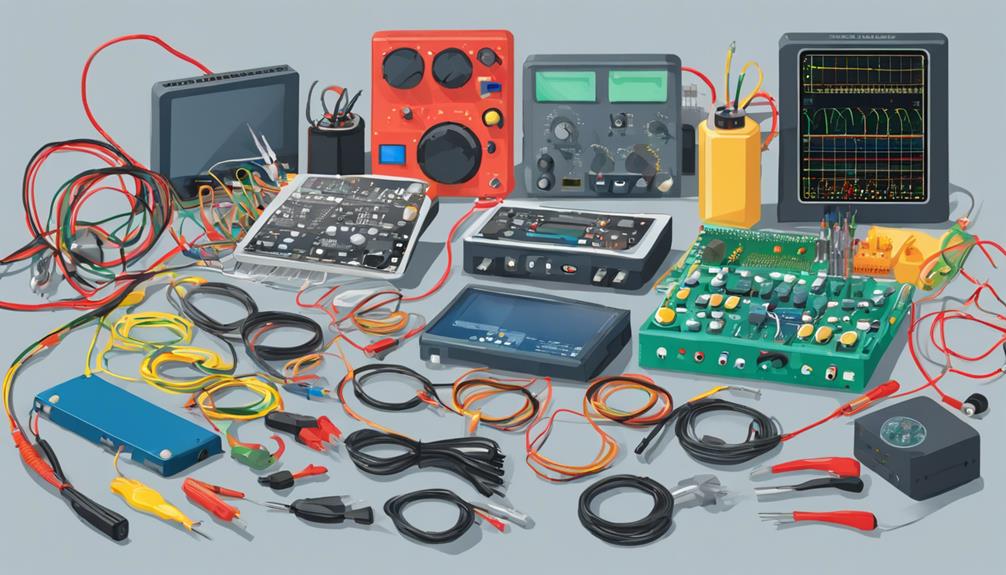Accurate and reliable circuit board testing is essential for electronic product reliability and performance. Inaccurate testing can lead to defects, failures, and damage to a company's reputation. Professional testing tools guarantee stringent standards are met, enhancing overall product satisfaction. They facilitate efficient testing, detect intricate PCB issues, and improve product quality. With advanced functionalities, these tools streamline testing processes, reducing time and costs. To guarantee high-quality, reliable PCBs, investing in professional tools is vital. By understanding the importance of professional testing tools, manufacturers can ensure accurate and reliable testing results, and discover the benefits of investing in quality testing equipment for excellent PCB performance.
Key Takeaways
- Professional testing tools ensure accurate and reliable testing results, detecting intricate PCB issues and enhancing overall product quality.
- Investing in professional tools guarantees stringent standards are met, reducing critical defects and improving customer satisfaction.
- Advanced functionalities of professional tools enhance testing efficiency, providing faster and more accurate results.
- Quality testing equipment reduces errors, ensures trustworthy results, and streamlines testing processes, saving time and costs.
- Professional testing tools are essential for evolving electronic systems, overcoming testing challenges and ensuring high-quality, reliable PCBs.
Importance of Circuit Board Testing
Ensuring the reliable operation of electronic products hinges on the meticulous testing of printed circuit boards (PCBs), rendering circuit board testing an indispensable step in the manufacturing process. The importance of circuit board testing cannot be overstated, as it directly impacts the functionality and reliability of electronic products.
Professional testing tools play a critical role in identifying defects and failures, enabling manufacturers to rectify issues before they reach consumers. Inaccurate or incomplete testing can lead to defects, failures, and compromised performance, ultimately affecting customer satisfaction and product reputation.
By investing in professional testing tools, manufacturers can guarantee that their PCBs meet stringent standards, ensuring excellent performance and reliability. Thorough testing also reduces the probability of defects and failures, thereby enhancing overall product satisfaction.
In the pursuit of excellence, manufacturers must prioritize circuit board testing, leveraging professional tools to ensure that their products meet the highest standards of quality and performance.
Benefits of Professional Testing Tools

Among the most significant advantages of investing in professional circuit board testing tools is their ability to guarantee accurate and reliable testing results, thereby minimizing the risk of defects and failures in electronic products.
These tools offer advanced functionalities and features to detect intricate PCB issues, ensuring thorough testing capabilities for complex PCB designs.
By investing in professional tools, manufacturers can reduce the risk of overlooking critical defects, thereby improving overall product quality.
Additionally, these tools enhance testing efficiency, allowing for faster and more accurate testing results. This, in turn, leads to improved product quality and reduced likelihood of product recalls.
With professional testing tools, manufacturers can secure reliable testing, reducing the risk of critical defects and enhancing testing capabilities.
Common PCB Testing Techniques

Circuit board testing involves a range of techniques, including In-Circuit Test, Burn-In Testing, X-Ray Inspection, Stress Test, and Functional Testing, each designed to identify specific defects and guarantee the reliability of electronic products.
These PCB testing techniques are vital for securing the performance and longevity of printed circuit boards. In-Circuit Test (ICT) checks component functionality and detects issues in the circuitry, while Burn-In Testing analyzes load capacity and identifies early errors in the PCB.
X-Ray Inspection scrutinizes internal traces, barrels, and solder connections for defects, and Stress Test evaluates the reliability of the PCB under extreme conditions to ensure performance. Functional Testing, on the other hand, verifies the PCB's ability to perform its intended function.
Overcoming Testing Challenges

As the complexity of PCB designs continues to increase, professional circuit board testing tools become indispensable for overcoming the challenges that come with evaluating these intricate electronic systems. The evolving technology and components in PCB manufacturing pose significant challenges to accurate and efficient testing. Without professional tools, manufacturers risk producing low-quality PCBs that fail to meet industry standards.
Professional circuit board testing tools address these challenges by enabling quick setup of automated test equipment systems for thorough PCB evaluation. This guarantees accurate and efficient testing, allowing manufacturers to keep up with the evolving technology and components in PCB manufacturing.
By investing in these tools, companies can secure high-quality, reliable PCBs for their products. Additionally, professional tools facilitate efficient testing, reducing the time and cost associated with manual testing methods.
Investing in Quality Testing Equipment

Equipped with precision-engineered components, quality testing equipment plays a vital role in achieving accurate and reliable testing results, thereby guaranteeing the production of high-performance PCBs that meet stringent industry standards.
Investing in such equipment is essential for efficient circuit board testing, as it facilitates thorough analysis and dependable functionality. Professional tools offer precision and consistency, reducing the risk of errors and ensuring trustworthy results. This, in turn, enhances product quality and customer satisfaction.
By incorporating high-quality testing equipment into the production process, manufacturers can streamline their testing processes, reducing time and costs associated with faulty PCBs. Moreover, reliable testing equipment enables manufacturers to identify and rectify defects early on, minimizing the likelihood of defects and failures.
Frequently Asked Questions
Why Is PCB Testing Important?
Consider the 2019 recall of 1.1 million faulty pacemakers, attributed to inadequate PCB testing. This costly mistake underscores the importance of thorough PCB testing.
Ensuring the reliability and functionality of printed circuit boards is vital, as faulty boards can have devastating consequences in safety-critical applications. Rigorous testing is essential to prevent such failures, ensuring compliance, and maintaining customer trust.
What Are the Benefits of in Circuit Testing?
In-circuit testing (ICT) offers numerous benefits, primarily facilitating the cost-effective detection of faults in PCB components. By identifying issues such as short circuits, open circuits, and incorrect component placement, ICT reduces the risk of costly rework and improves overall product reliability.
Additionally, ICT provides detailed insights into individual component functionality, enabling targeted repairs and optimizing production efficiency.
Why Is PCB Inspection Important?
Just as a master chef inspects every ingredient before serving a dish, PCB inspection is an essential step in the electronic manufacturing process. It's a quality control gate that prevents defective boards from advancing to the next stage.
Is PCB Designing a Good Career?
PCB designing presents a lucrative and in-demand career path, driven by the growing need for electronic devices and technological advancements.
With a strong foundation in electrical engineering and design software skills, professionals in this field can excel and contribute to innovative projects.
As an essential aspect of ensuring device functionality, efficiency, and reliability, PCB designers play a significant role, making it a fulfilling and rewarding career choice.


